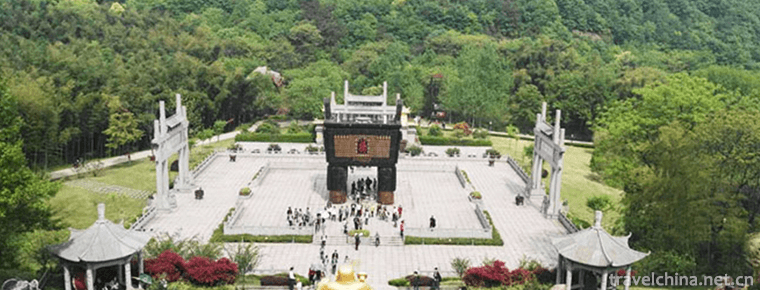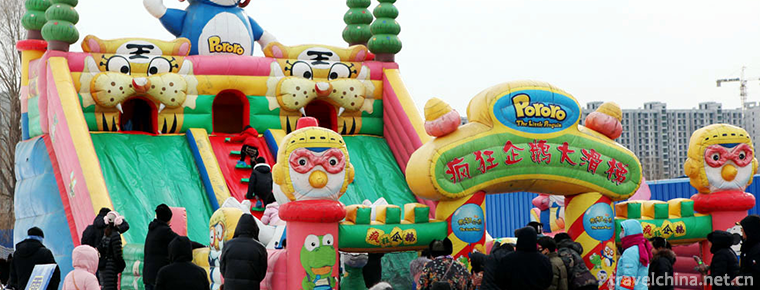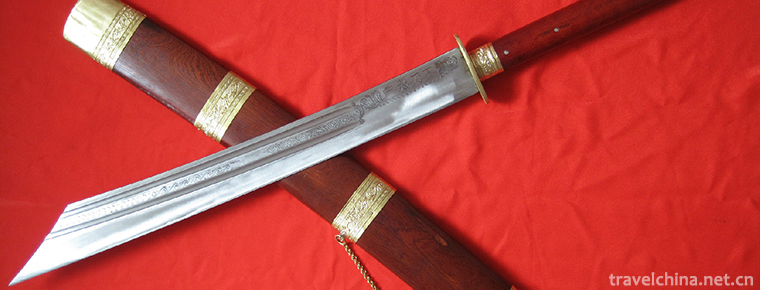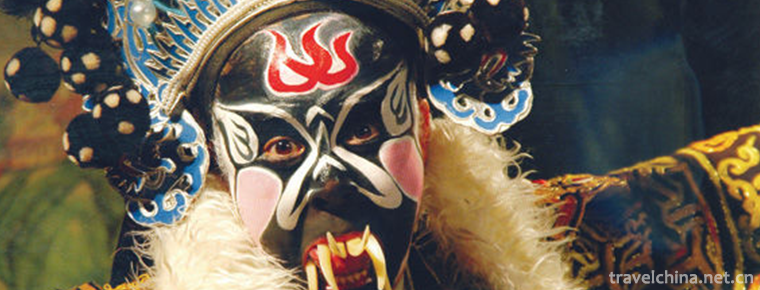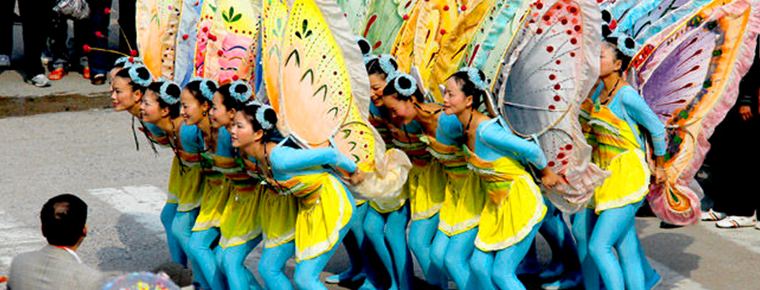University of Electronic Science and Technology Of China
University of Electronic Science and Technology Of China
Located in Chengdu City, Sichuan Province, the University of Electronic Science and Technology, formerly known as the Chengdu Institute of Telecommunication Engineering, was deployed by Premier Zhou Enlai in 1956. It is related to the telecommunication engineering of Jiaotong University (now Shanghai Jiaotong University, Xi'an Jiaotong University), Nanjing Institute of Technology (now Southeast University) and South China Institute of Technology (now South China University of Technology). Professional merger created.
In 1960, it was listed as one of the key universities in China by the Central Committee of the Communist Party of China. In 1961, it was designated as one of the seven national defense industry colleges. In 1988, it was renamed as the University of Electronic Science and Technology. In 1997, it was designated as the first national key university for the "211 Project". In 2000, it was transferred from the former head of the Ministry of Information Industry to the head of the Ministry of Education. In 1985, it entered the ranks of the key construction universities of the National "985 Project" and in 2017, it entered the ranks of A-type universities of the "world-class university". After more than 60 years of construction, the school has formed a multi-level and multi-type personnel training pattern from undergraduate to postgraduate and doctoral students. It has become a multi-disciplinary which covers the whole electronic discipline, with electronic information science and technology as the core, with engineering as the main part, and science and technology penetration as well as the coordinated development of science, engineering, management, arts and medicine. Research universities.
The school has three campuses, Qingshuihe, Shahe and Jiulidi, covering an area of more than 4100 mu. It has a modern digital library with abundant collection and a number of modern stadiums with complete facilities. The four seasons of the campus are lush trees, rippling lakes and elegant buildings. It is a good place to cultivate sentiment and study and study.
The school adheres to the six-in-one concept of "value shaping, enlightening thought, arousing curiosity, stimulating potential, exploring knowledge and personality development", and is committed to cultivating the ability of innovation with national feelings, global literacy, knowledge integration and integration. In the future, it can lead the academic frontier, science and technology and personality development. Social and economic development can be regarded as innovative and leading talents for national rejuvenation. The school has 23 colleges (departments) and 63 undergraduate majors, of which 13 are national characteristic majors. There are more than 19800 full-time undergraduates, 17,000 postgraduates and 3,000 doctoral students. The employment rate of students has remained above 96%, and the rate of Undergraduates'further education at home and abroad has exceeded 2/3, of which the rate of going abroad (abroad) has exceeded 1/5. Electrical students are all over the world. They are widely praised by all walks of life and employers for their comprehensive quality, solid professional knowledge, strong ability and strong stamina.
The school attaches great importance to the cultivation of students'innovative and practical abilities, and supports and encourages students to actively participate in scientific and technological innovation, cultural and artistic activities and social practice activities. Students are active in China's "Internet +" College Students' innovation and entrepreneurship competition, "Challenge Cup" National College Students' extracurricular academic science and technology works competition, "creating youth" national entrepreneurship competition, National Undergraduate Electronic Design Contest, National Undergraduate Mathematical Contest in modeling, ACM-ICPC International Collegiate Programming Contest, and national College Robot Competition, Global College Students Gene Engineering Competition, International College Debate Competition, National College Students Art Competition and other high-level competitions have won gold and silver with remarkable achievements, ranking first in the "Training of Innovative Talents and Evaluation of Discipline Competition in Chinese Colleges and Universities".
The school has built a number of national top-quality courses and textbooks, such as national top-quality online open courses, and has a National University Students'cultural quality education base, as well as more than 20 national education and teaching practice bases and demonstrations, such as national experimental teaching demonstration center, virtual simulation experimental teaching demonstration center and engineering practice education center. Heart, won a number of national teaching achievement awards.
The school has two national key disciplines (including six secondary disciplines are national key disciplines) and two national key disciplines (cultivation). There are 16 authorized points for doctoral degree in first-level disciplines, 28 authorized points for master degree in first-level disciplines, 1 authorized point for master degree in second-level disciplines, 4 authorized points for doctoral degree and 12 authorized points for master's degree. There are 13 post-doctoral mobile stations. In the fourth round of the national first-level discipline evaluation, four disciplines of the school were awarded category A, of which two disciplines, Electronic Science and technology, information and communication engineering, were A+, and the number of A+ disciplines ranked first in Western universities. Engineering, Material Science, Physics, Computer Science, Chemistry, Neuroscience and Behavior, Biology and Biochemistry, Mathematics entered the first 1% of ESI, and Engineering and Computer Science entered the first 1.
With the orientation of "top heaven, site and cultivating people", the school adheres to the development concept of "opening, focusing, integration and struggle", faces the world's scientific and technological frontier, the country's major needs and the main economic battlefield, and strives to promote the scientific and technological innovation pattern with equal emphasis on basic research and applied research. Since the Eleventh Five-Year Plan, scientific and technological achievements have won 24 national awards, 302 ministerial and provincial awards, published more than 25,880 SCI/SSCI papers and authorized more than 5800 invention patents. The school has four national key laboratories, four national engineering laboratories, one national engineering research center, one national engineering research center, three national international joint research centers, one of the first batch of national specialized public space, 49 provincial and ministerial scientific research institutions, four innovative groups of the National Natural Science Foundation Committee and six. The innovation team of the Ministry of Education, one national defense science and technology innovation team and seven academic innovation and intellectual base of universities ("111" plan). The school and Chengdu jointly implement the "one school and one zone" action plan, build the industrial belt of transformation of University achievements, and work together to build the "western Silicon Valley" of China.
The school vigorously implements the strategy of "giving priority to the development of talents". There are more than 3800 faculty members, including more than 2390 teachers and 630 professors. Up to now, our school has more than 300 outstanding talents at the national level, including 8 academicians at home and abroad, 8 academicians from the Chinese Academy of Sciences, the Chinese Academy of Engineering and the European Academy of Sciences, 20 from the IEEE Fellow, 21 from the Ten Thousands Plan (including 12 from the Young Top Talents Plan), and 162 from the State (including young specialists). Among them, 37 were "Yangtze River Scholars", 36 were outstanding, Zhuoqing and Youqing winners, 4 were national teaching teachers, 12 were selected for the National Million Talent Project, and 18 were highly cited scientists in the world.
The school has vigorously implemented the international development strategy, and has established friendly cooperative relations with more than 200 universities, scientific research institutions and enterprises in more than 70 countries and regions of the world. It has signed agreements on student exchange and joint training with a number of well-known foreign universities. Overseas teacher training bases have been established at William Mary College in the United States and Glasgow University in the United Kingdom. It has established long-term cooperative relations with world famous universities such as Oxford University, London University College, University of Pennsylvania, University of California and so on. Through the organic combination of domestic and overseas learning links, it has constructed an international talent training system. The number of students going abroad (abroad) has been increasing continuously. The proportion of students who have overseas learning experience in school is more than 30%. The long-term and short-term destinations for students to study abroad cover nearly 50 countries and regions. Since 2010, more than 1000 long-term international students from more than 70 countries and regions around the world have been enrolled. Every year, the school hosts more than ten international academic conferences, dispatches a large number of teachers to study abroad, cooperate in research and participate in international conferences. The school has seven national-level disciplines innovation and intelligence base, the total number of colleges and universities in the forefront of the country. The school has established three national-level international joint laboratories and a number of inter-university joint research centres with the University of Pennsylvania, the University of Glasgow, the University of New South Wales and the Dublin Polytechnic University. The school actively implements the First-class Partnership Program to promote international talent cultivation, and jointly builds Glasgow College of Electronic Science and Technology University with the University of Glasgow, UK; co-sponsors Master of Integrated Circuit Engineering Education Project with the Royal Swedish Institute of Technology; and co-sponsors Master of Biomedical Engineering-Neuroscience with McGill University, Canada. He is a member of the Master of Business Administration Education Program in cooperation with Webster University in the United States, a doctorate in management education program with Lisbon University of Business Administration in Portugal, and a Confucius Institute in Montpellier with the University of Montpellier in France.
The University of Electronic Science and Technology takes "seeking truth from facts and doing great things in the atmosphere" as its motto, takes talent cultivation as its foundation, serves the national and local economic construction and national defense construction as its responsibility, forges ahead and innovates with determination, and strives to build a world-class university with Chinese characteristics as soon as possible.
(Data as of August 2019)




-
Anhui rescue
Anhui rescue Great rescue is a traditional feature of Shouxian County in Anhui Province, which has a history of more than 1000 years..
Views: 210 Time 2018-11-27 -
Beijing Hangzhou Grand Canal
Beijing-Hangzhou Grand Canal is the longest and largest ancient canal in the world. It is also one of the oldest canals. It is called three great projects in ancient China together with the Great Wall.
Views: 148 Time 2018-12-22 -
the Gubeikou Great Wall
The ancient Beikou Great Wall is the most complete Great Wall system in the history of China's Great Wall. It consists of the Great Wall of the Northern Qi Dynasty and the Great Wall of the Ming Dynas.
Views: 106 Time 2019-01-12 -
Malenqi Peak Forest Tourist Area
Located at the junction of Tongling, Nanling and Fanchang counties on the South Bank of the Yangtze River, Maren Qifeng scenic spot is located in the middle of the southern Anhui tourism belt.
Views: 202 Time 2019-02-06 -
hot spring leisure city
Wendu Shuicheng, Hongfu Wendu Shuicheng, is located 20 kilometers north of the Forbidden City of Beijing. It pillows Wenyu River, the Mother River of Beijing.
Views: 127 Time 2019-02-22 -
Crab Island
Crab Island Green Eco-Resort is based on agriculture, characterized by villages, with environmental protection, green, organic and healthy as the solid connotation of tourism and vacation. .
Views: 126 Time 2019-02-25 -
The Forging Skill of Achang Husha Knife
Achang household knife forging technology, Yunnan Dehong Dai Jingpo Autonomous Prefecture Longchuan County household Sa Township traditional handicraft, one of the national intangible cultural heritag.
Views: 190 Time 2019-03-28 -
Ninghai Pingtao
Ninghai Pingdao originated in the late Ming and early Qing Dynasty and was popular near Ningbo. It has a history of three or four hundred years. Ninghai Ping Tune belongs to the branch of Xinchang Tun.
Views: 124 Time 2019-06-08 -
The technical skill of penjing
Bonsai art refers to the Soviet bonsai art, which originated in the Tang Dynasty, flourished in the Ming Dynasty, matured in the Qing Dynasty, and developed in modern times. Since the 1980s, Suzhou Bo.
Views: 236 Time 2019-06-09 -
Eighteen Butterflies
Eighteen butterflies is a local traditional dance form popular in the central part of Zhejiang Province (mainly in the area of Jinhua Yongkang). Twenty young women play the whole set of eighteen butte.
Views: 112 Time 2019-06-15 -
Anhui University of Finance and Economics
As a multi-disciplinary finance and economics university, economics, management and law are the first batch of universities that have the right to grant bachelor's degree and the third batch of granti.
Views: 186 Time 2019-09-30 -
Science and technology of Panzhihua
In 2018, there were 2865 patent applications in Panzhihua. The output value of high-tech industry reached 53.1 billion yuan, and 2015 science and technology projects were arranged, including 780 high-tech projects, 320 new high-tech projects in that year, and 16 science and technology.
Views: 342 Time 2020-12-14



